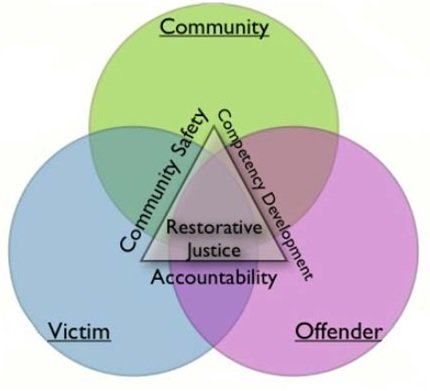
RESTORATIVE JUSTICE AND VICTIM – OFFENDER’S MEDIATION
WHAT IS RESTORATIVE JUSTICE?
Restorative justice provides an entirely different way of thinking about crime and victimization. Rather than the state being viewed as the primary victim in criminal acts and placing victims and offenders in passive roles, as is the case in the prevailing retributive justice paradigm, restorative justice recognizes crime as first and foremost being directed against individual people. It assumes that those most affected by crime should have the opportunity to become actively involved in resolving the conflict. Restoration of losses, allowing offenders to take direct responsibility for their actions, and assisting victims in their journey of moving beyond their frequent sense of vulnerability by means of achieving some closure, stand in sharp contrast to focusing on past criminal behavior through ever-increasing levels of punishment (Umbreit 1996, 1995b, 1994a, 1991a; Wright 1991; Zehr 1990). Restorative justice attempts to draw upon the strengths of both offenders and victims, rather than focusing upon their deficits. While denouncing criminal behavior, restorative justice emphasizes the need to treat offenders with respect and to reintegrate them into the larger community in ways that can lead to lawful behavior. It represents a truly different paradigm.


